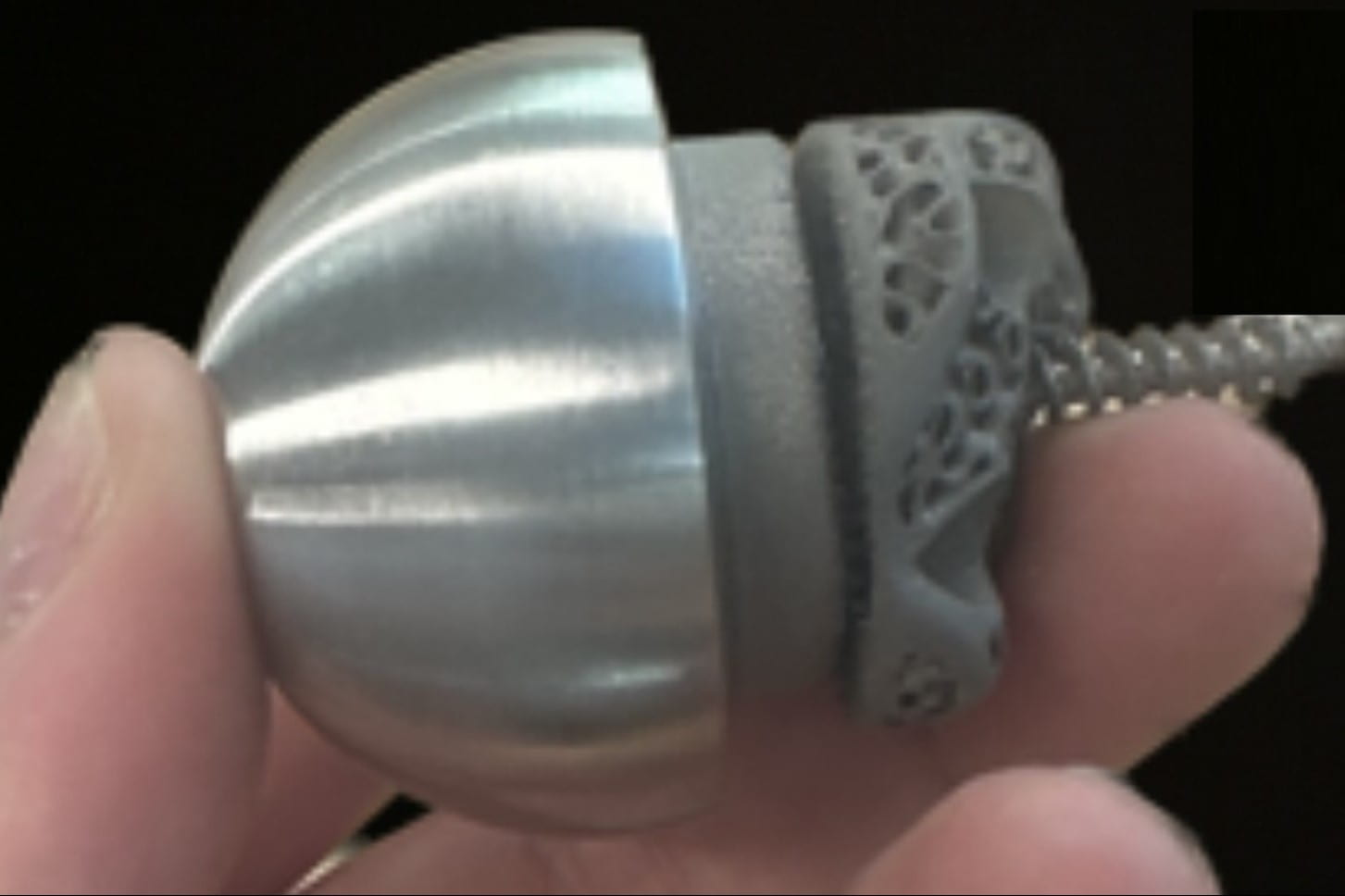Get to know our team on LinkedIN:
Olivia Kerr, Brianna Milks, Caroline Miller, Harini Mohan, Katherine Vietmeyer
Hassle-Free TSA
Optimizing a revisable 3D-printed patient-specific implant to treat severe shoulder wear.
Project Description:
Patients experiencing severe arthritis, irreparable tearing of the rotator cuff, or significant trauma to the shoulder joint are candidates for the life-changing reverse total shoulder arthroplasty (rTSA). In the rTSA, the ball and socket of the shoulder joint are exchanged from their anatomical positions. The damaged shoulder socket, or glenoid, must be augmented with an implant before compression with a baseplate and placement of the new ball, the glenosphere, which together offset the center of rotation of the joint. Patients with abnormal or severe patterns of glenoid wear require precisely shaped, patient-specific implants so that their surgeons do not have to cut away more of the already scarce glenoid bone to fit the shape of off-the-shelf implants. Currently, surgeons performing rTSA procedures with patient-specific implants must secure the implant with central-post fixation, involving a press-fit mechanism, which achieves sub-optimal compression of the implant into the bone. Team hassle-freeTSA has created the one-way STAR, an innovative central-screw baseplate that is compatible with patient-specific implants. With the screw-in mechanism, surgeons may compress the implant with the baseplate along a continuum of force so that they may achieve the optimal level of compression. The one-way aspect of the screw-in mechanism prevents rotational forces through the glenosphere, which is attached via Morse taper on the top surface, from unscrewing the STAR. Additionally, the baseplate surface contains negative space, enabling surgeons to supplementally lock the implant in place with peripheral screws after compression with the STAR. The numerous features of the one-way STAR, compiled in a convenient single piece, benefit surgeons in the OR and patients in the long run, as the optimal compression and one-way screw feature prevent hardware loosening and related complications in the future.



